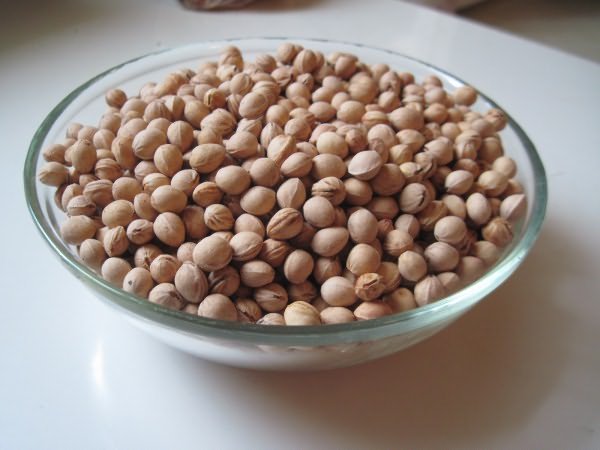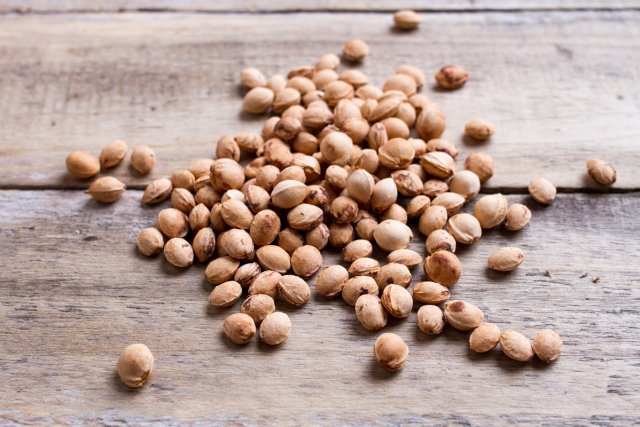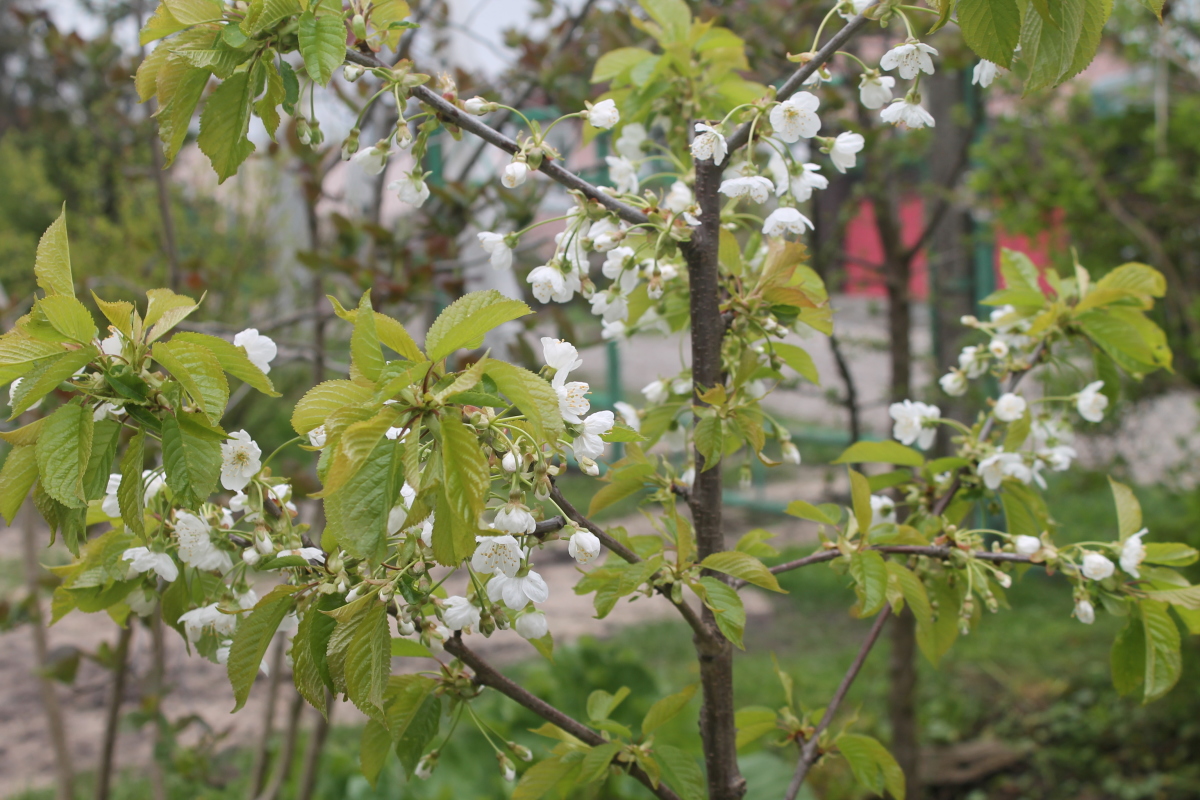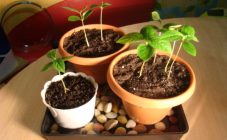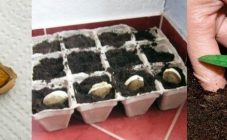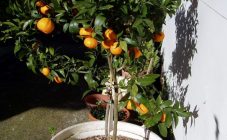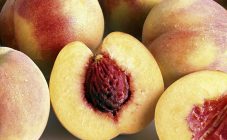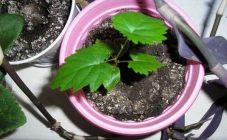Content:
Sweet cherry, like garden cherry, is a deciduous tree of the Pink family from the plum genus. It belongs to woody plants, grows up to 10 m in height. The crown is lush, with bright green leaves. The fruiting period begins 4-7 years after planting, depending on the characteristics of the variety.
The main breeding method is cuttings. Some gardeners propagate cherries from the undergrowth. This article will discuss how to grow cherries or cherries from a stone at home.
Sweet cherries are rich in antioxidants that reduce the risk of cancer. Helps to maintain youthfulness and prevent wrinkles.
A brief overview of fruitful cherry varieties
To get a good harvest, it is necessary to select varieties taking into account the climatic conditions of the region. For example, residents of central Russia are better off planting frost-resistant species. In the Rostov region or other southern regions, more thermophilic varieties are suitable.
Popular fruit-bearing varieties of cherries
Early:
- Iput.
- Ovstuzhenka.
- Valery Chkalov.
- Fairy tale.
Middle and late:
- Fatezh.
- Gift to Stepanov.
- Bryansk Pink.
- Jealous.
How to grow a cherry from a stone
Gardeners are often interested in whether a cherry or a cherry from a stone will bear fruit? The answer to this question is ambiguous. Growing the above crops from seeds is quite possible. Some amateur gardeners achieve quite decent results. Despite the fact that this procedure is a rather troublesome task, even a novice summer resident can do it.
Pros of planting from a bone:
- good adaptation to local conditions.
- frost resistance.
- strong immunity to diseases of stone fruit crops.
Young cherries or cherry trees are conveniently used as a rootstock for cultivated varieties, that is, layering and shoots (scion) are grafted onto them. A cultivar is taken as a scion. If they take root, then a new variety is obtained, which takes on the best qualities of the parents.
Disadvantage: the varietal characteristics of the tree are poorly transferred
Step by step guide
For those gardeners who are wondering whether it is possible to grow cherries or cherries from a stone, detailed instructions for planting are offered.
Step 1. Selection and preparation of the bone
Not every bone grows a full-fledged tree that retains the properties of the variety. Therefore, the choice must be approached extremely responsibly.
Most stone fruit crops have a good germination rate - 70-80% of the drupes form viable cherry or cherry sprouts.
- You need to choose the most ripe berries. You can even use fresh carrion, this does not affect germination.
- Use seeds from trees growing in your area. They are already adapted to specific conditions.
- Select several drupes at the same time to get more chances.
Selected cherry / sweet cherry seeds must be thoroughly washed and treated with fungicides (substances to protect against fungal diseases).
Step 2. Hardening of drupes before planting
Before planting the prepared drupes in the ground, it is necessary to carry out a mandatory stratification procedure. In other words, harden the seeds, keep them for a long time at a certain temperature.
Pre-calcined and moistened sand is poured into a small container. Prepared seeds are placed on it. Sprinkle on top with a mixture of sawdust, peat and sand. The container must be stored at a temperature of 2 to 6 ° C, for example, in a refrigerator or unheated summer cottage. This is necessary for the seeds to become ripe and germinate better.
Seeds should be checked once a week for rot or mold. To do this, they are removed from the container, the bones and the mixture in which they were stored are carefully checked. Low-quality drupes are removed, the rest are placed back. Moisten if necessary.
In early spring, it is better to take containers with bones out into the yard and dig in the snow.
Step 3. Correct seed placement
When a sprout is visible between the shells, it is time for planting. It can be done in two ways:
At home.It is better to plant seeds in ceramic or plastic pots with a volume of at least 0.5 liters. First, it is imperative to make drainage - pour crushed stone or expanded clay with a layer of 3-4 cm. Then fill the container with light nutritious soil for fruit crops.
Seeding depth - 1 cm. Sprinkle with substrate on top and slightly moisten. In warm weather, take it outside.
The grown seedlings need to be cut open and transplanted into a larger container. Care for seedlings in the first year is minimal. You just need to loosen the ground and regularly moisten the substrate. From the second year, the formation of the crown is necessary.
Landing in open ground. Seed germination in open ground is lower than that planted at home.
In this case, you need to carefully choose a place that is well lit and there are no drafts. They are planted in rows to a depth of 3-4 cm.The distance between the rows is 30 cm, between the seeds is 15 cm.
Step 4. Tree grafting and care
In the third year after planting, the seedlings need to be grafted so that they turn into full-fledged trees. Any variety can serve as a graft, the main thing is that it is zoned for the area.
The easiest and most effective way to vaccinate is by splitting. Vaccination is done in this way:
- Tools are disinfected with alcohol or special solution.
- On the cuttings along an oblique line, a cut of 3-4 cm is made.
- Combine the scion and stock. The junction is covered with garden varnish and fixed with tape or electrical tape.
If young leaves appear on the grafted cuttings, then the vaccination was successful.
A year after planting, the seedlings can be planted in a permanent place. The diameter of the planting pit is 60 cm, the depth is 40 cm. The roots in the pit should not be cramped.
The backfill is mixed with the following components:
- humus.
- superphosphate.
- wood ash.
- potassium chloride.
At the bottom of the pit, drainage from sand and gravel must be placed. Next, 1/3 is filled with the prepared mixture. The seedling is placed in the hole and carefully covered with the remaining soil.
Further care consists in regular watering, crown formation and fertilizing with mineral fertilizers 4-5 times during the growing season.
A cherry tree will begin to bloom for the first time 2-3 years after vaccination, a cherry tree - 3-4 years. Flowers are similar in structure, but cherries are much larger and have a pink tint.
Diseases and pests of sweet cherry / cherry
The most common are fungal diseases of stone fruits:
- Clasterosporium disease. Brown spots appear on the surface of the leaves and eat them away.
- Coccomycosis. The leaves become covered with red dots, turn yellow and fall off. Occurs during flowering.
- Moniliosis, or gray rot. The leaves darken and dry out. Grayish growths appear on the fruits, causing rotting.
- Verticillosis. The bark bursts on young trees. The flowers darken and wither. Gum is released on the trunk.
To prevent the occurrence of fungal diseases, you need to regularly inspect trees and remove damaged tissue. Most diseases can be dealt with with fungicides.
Thus, the answer to the question of whether it is possible to grow cherries or cherries from a stone is definitely positive. It is only necessary to make an effort so that trees with this method of reproduction become full-fledged.

